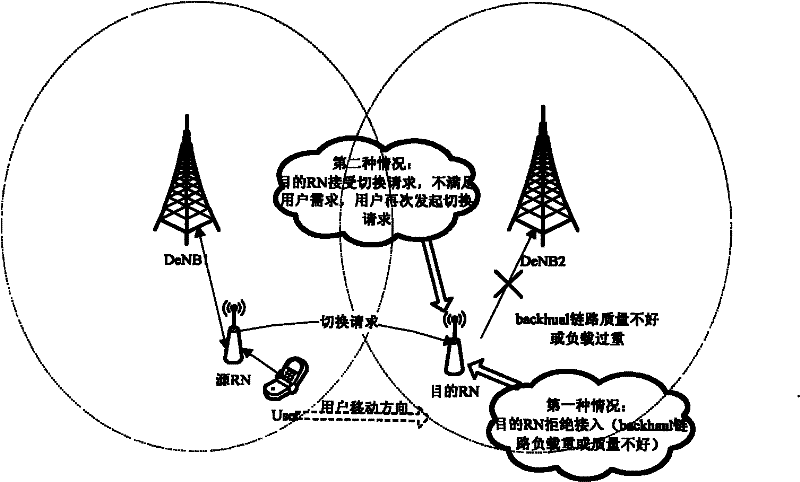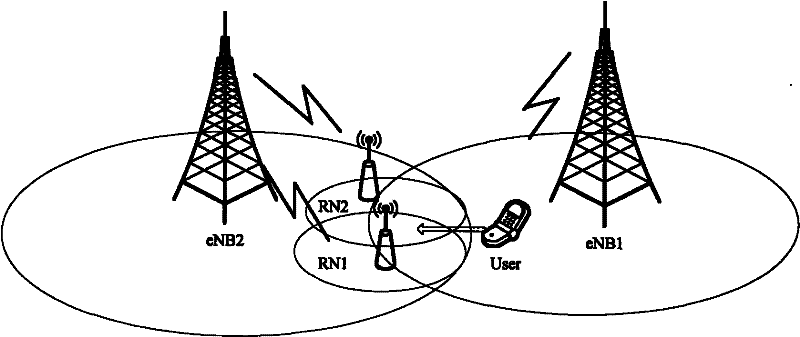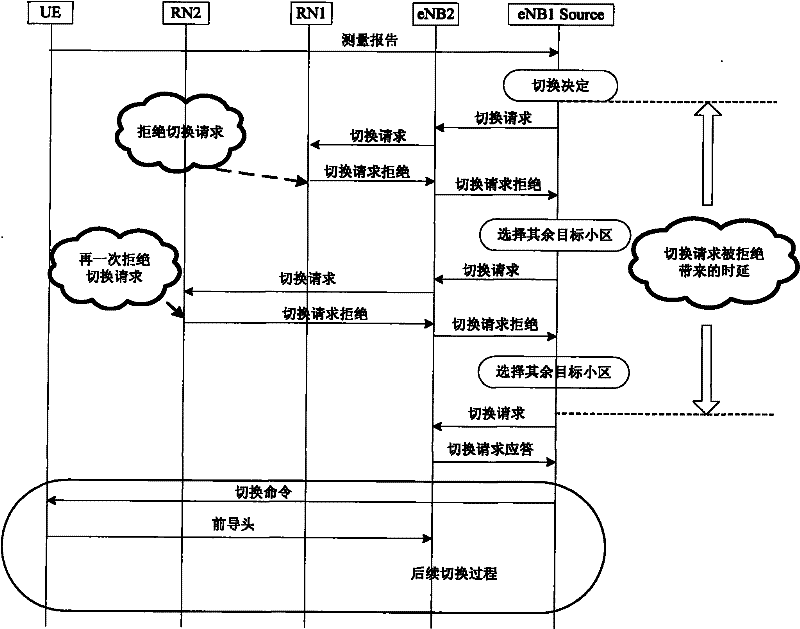The method to avoid the handover request being rejected after joining the relay in LTE-A
An LTE-A, handover request technology, applied in access restriction, electrical components, wireless communication, etc., can solve problems such as large handover delay, call drop, handover request rejection, etc., to achieve the effect of reducing handover delay
- Summary
- Abstract
- Description
- Claims
- Application Information
AI Technical Summary
Problems solved by technology
Method used
Image
Examples
Embodiment 1
[0037] This embodiment provides a method for avoiding the rejection of the handover request after adding a relay in LTE-A. The method describes the handover process for the user to handover from the source RN to the target RN under the same DeNB, as shown in Figure 4 shown. Figure 4 The steps marked by the dotted box in the middle are the places that are different from the original switching process. The method of this embodiment is the same for the above six different handover types.
[0038] The RN node of each cell uses the broadcast channel to broadcast information such as the load of the cell and the status of the backhaul link. Due to the shortage of broadcast channel resources, the information it carries needs to be simplified. The information expression method is as follows: the load and the backhaul link information are considered to be the same concept , any bad condition can be used as a judgment to reject the handover request. The heavy load also means that the ...
Embodiment 2
[0045] This embodiment provides a method for avoiding the rejection of the handover request after adding a relay in LTE-A. This method describes the process of handing over the user from the source RN under the cell DeNB1 to the target RN under the cell DeNB2, as shown in Figure 5 shown. Figure 5 The arrow in the middle dashed line indicates the moving direction of the user. During the moving process, the user measures the strong signal strength of the RN subordinate to DeNB2, and reports the measured signal strength information to the source RN.
[0046] In the traditional handover procedure, the user selects the RN with the strongest signal to initiate a handover request, but the method described in this embodiment adds 4 steps before initiating the handover request, corresponding to the 4 arrows marked by numbers in the figure one by one:
[0047]Step 1. The measurement report received by the source RN includes the cell ID and signal strength of each destination RN. The s...
Embodiment 3
[0062] The difference between this embodiment and Embodiment 2 is: if the candidate cell measured by the user has a stronger signal than the RN under the same DeNB, the user only needs to ask the DeNB of this cell about the situation of the RN node, that is, only execute the embodiment Steps 1 and 4 as described in one. This is the above-mentioned second handover type—a handover method in which a user is handed over from an RN to another RN in the same cell.
PUM
 Login to View More
Login to View More Abstract
Description
Claims
Application Information
 Login to View More
Login to View More - R&D
- Intellectual Property
- Life Sciences
- Materials
- Tech Scout
- Unparalleled Data Quality
- Higher Quality Content
- 60% Fewer Hallucinations
Browse by: Latest US Patents, China's latest patents, Technical Efficacy Thesaurus, Application Domain, Technology Topic, Popular Technical Reports.
© 2025 PatSnap. All rights reserved.Legal|Privacy policy|Modern Slavery Act Transparency Statement|Sitemap|About US| Contact US: help@patsnap.com



